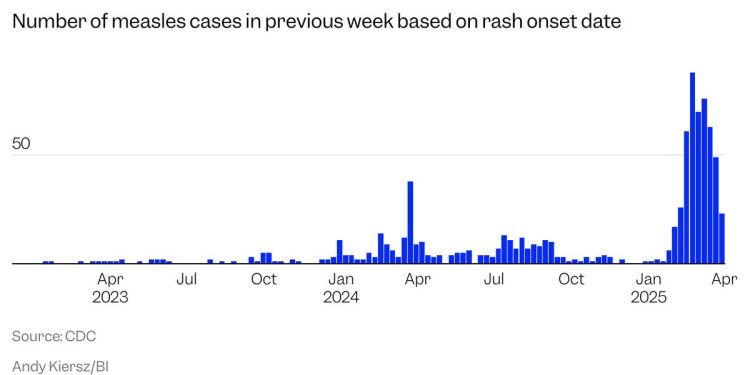In the United States, cases of measles develop exponentially. There are already 70% more confirmed cases in 2025 than in 2024.
The measles was declared eliminated in the United States in 2000 due to the high vaccination rates of measles, mumps and rubella (MMR). In 2019, the United States almost lost its status to eliminate measles when epidemics caused more than 1,200 cases of measles.
While the United States still technically maintains its disposal status, cases of measles continue to increase worldwide as infant vaccination drops and more vaccinated people go to the United States and elsewhere.
2025 has seen 483 cases of measles experienced so far in 19 states.
Texas has the biggest epidemics
87% of all cases of American measles are in Texas, which has had epidemics in several counties.
Cases of measles have also been confirmed in Alaska, California, Florida, Georgia, Kansas, Kentucky, Maryland, Michigan, Minnesota, New Jersey, New Mexico, New York, Ohio, Pennsylvania, Rhode Island, Tenesee, Texas, Vermont and Vermont and Vermont Washington.
Most cases are in non -vaccinated children
The majority of cases are in children under 19, and almost all are not vaccinated or have an unknown vaccination status. Only 3% of cases occurred in people with one or two doses of the ROR vaccine.
So far, there has been a confirmed death caused by measles and a case Under investigation because the person was tested positive for measles after death. 70 people were hospitalized.
You can protect yourself by getting a booster
Doctors recommend obtaining a MMR booster if you have been vaccinated before 1968, because the previous versions of the vaccine were not as effective. You can get a booster if you do not know your medical history and children under 1 can also obtain early doses of the vaccine.
The measles is very contagious and can live in the air for two hours. If you are traveling, the CDC recommends being fully vaccinated two weeks in advance and monitoring the symptoms for three weeks after your return.
businessinsider



